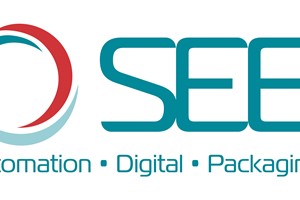Despite high hopes for 3D printing in the food industry, particularly in areas such as alternative meat, chocolate, and pasta, the technology has not yet fully met initial expectations. However, the food and beverage sector remains one of the largest and most quietly successful areas for 3D printing implementation. Although direct 3D printing of food products attracts more public attention, the additive manufacturing of machinery parts for food and beverage production is proving to be a game-changer. This application could drive widespread adoption of additive manufacturing (AM).
The food and beverage manufacturing sector is rapidly expanding, with the food processing equipment market alone projected to reach $84.9 billion by 2028. This growth comes with challenges such as rising costs, labor shortages, and supply chain disruptions. 3D printing offers significant benefits by improving the efficiency and functionality of food processing machinery, which often involves highly complex assemblies with thousands of parts.
Additive Industries, in collaboration with K3D and the Kaak Group, utilized metal additive manufacturing to enhance dough cutting in the food industry. They redesigned a dough-cutting robot arm, incorporating features like a porous blade for cleaner cuts and a topology-optimized structure, reducing weight by 90%. Made from 3D printed SS316L stainless steel, the new design met all food safety standards, consolidated 20 parts into one, cut lead times and production costs by 60%, and boosted production capacity by 20%.
Heineken’s Seville brewery implemented 3D printing to improve production efficiency. Establishing a 3D printing lab, the brewery achieved 70-90% cost savings per part, increased production line uptime, and improved employee safety. The first success was printing safety latches, which enhanced safety and raised 3D printing awareness among employees.
Kaak Group, alongside Materialise, tackled issues in pancake baking lines using 3D printing. By redesigning a lifting device to include internal channels for airflow, they significantly reduced pancake waste and production delays. This innovation led to a 10% productivity increase and annual savings of €85,000.
Heineken identified more opportunities for 3D printing, such as creating difficult-to-replace spare parts, leading to faster and cheaper part production. Using Ultimaker S5 printers, the brewery achieved 80% faster delivery times and 80% cost savings for printed parts.
Ultimaker’s Italian partner, 3DItaly, collaborated with Policom to design custom tools for bagging almond paste. These tools improved production efficiency and reduced costs, allowing rapid response to market demands without waiting for outsourced production.
Desktop Metal’s Studio System produced 316L stainless steel parts for Curio’s fish filleting machine, adding internal cooling channels to offset heat exchange. This design improvement cut lead times significantly, allowing Curio to introduce new machines faster.
HVAMC produced a 3D printed stainless steel roller guard for JBT’s Adaptive 3D Portioning System, enhancing rapid processing of poultry, meat, and seafood.
Markforged and the Australian Meat Processor Corporation (AMPC) trialed 3D printing for equipment maintenance in the red meat processing industry. The Casino Food Co-op successfully used Markforged X7 3D printers to address issues with label printer hinges, tannery gears, and evaporator fan blades, preventing costly downtime and ensuring continuous operations.
While many notable AM companies like EOS, Stratasys, and 3D Systems have likely found applications in the food and beverage packaging industry, these successes illustrate the potential for 3D printing to revolutionize the sector. The scale of implementation may be much larger than publicly known, signaling a significant transformation in food and beverage machinery manufacturing.
voxelmatters.com - Davide Sher














